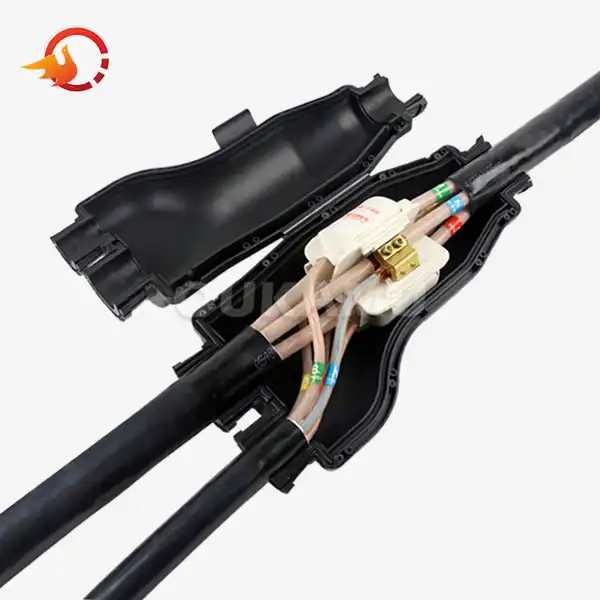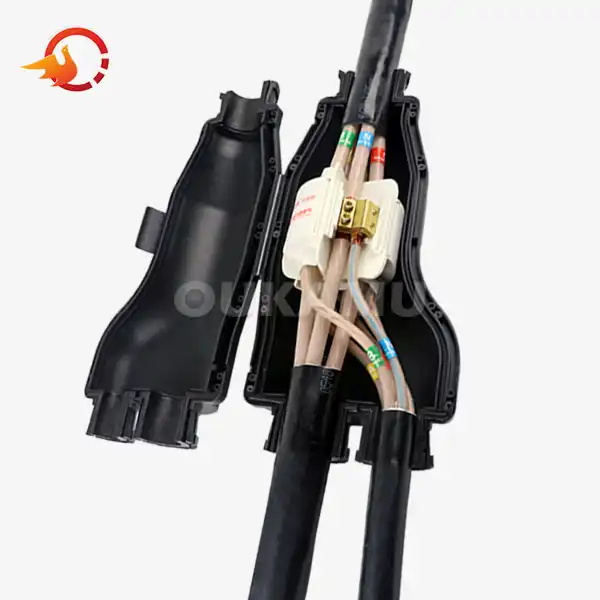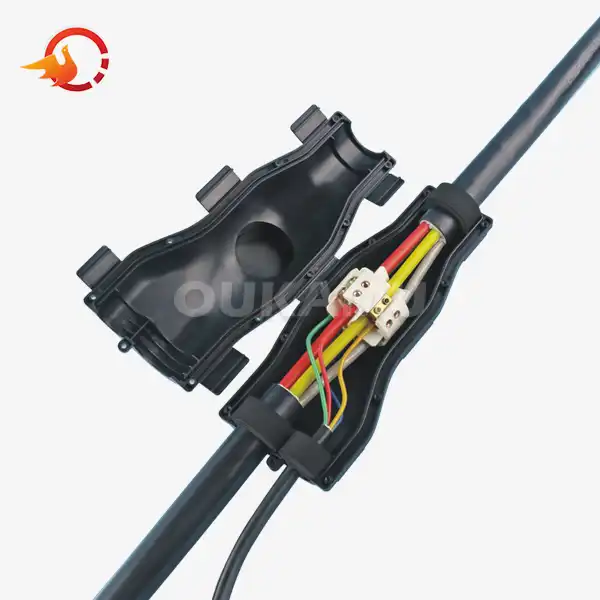Top Things to Consider Before Buying Resin Cable Joint
 2025-09-17 11:06:41
View:389
2025-09-17 11:06:41
View:389In the world of electrical connections, resin cable joints have become indispensable for their durability, reliability, and versatility. Whether you're working on a large-scale industrial project or a residential installation, choosing the right resin cable joint is crucial for ensuring long-lasting and safe electrical connections. This comprehensive guide will walk you through the key factors to consider before making your purchase, helping you make an informed decision that meets your specific needs.
Key Benefits of Using Resin Cable Joints
Resin cable joints offer numerous advantages over traditional cable connection methods. Understanding these benefits will help you appreciate why they're often the preferred choice for many electrical professionals:
Superior Environmental Protection
One of the standout features of resin cable joints is their exceptional resistance to environmental factors. The resin encapsulation creates a robust barrier against moisture, dust, and corrosive elements, ensuring the integrity of the electrical connection even in harsh conditions. This makes them particularly suitable for outdoor installations, underground applications, and industrial environments where exposure to the elements is a concern.
Enhanced Electrical Insulation
Resin cable joints provide excellent electrical insulation properties. The resin material effectively prevents current leakage and reduces the risk of short circuits, contributing to the overall safety and reliability of the electrical system. This high-quality insulation is especially valuable in high-voltage applications or areas where electrical interference is a concern.
Mechanical Strength and Durability
Once cured, the resin forms a solid, monolithic structure around the cable joint. This not only protects the connection from physical damage but also provides significant mechanical strength. The resulting joint can withstand vibrations, impacts, and other mechanical stresses, making it ideal for applications in dynamic environments or areas prone to movement.
Flexibility in Application
Resin cable joints can be used with a wide range of cable types and sizes, offering flexibility in various installation scenarios. Whether you're working with low-voltage communication cables or high-voltage power lines, there's likely a resin joint solution that fits your needs. This versatility makes resin joints a valuable asset in diverse electrical projects.
Long-Term Cost-Effectiveness
While the initial cost of resin cable joints may be higher than some alternatives, their longevity and reliability often result in lower long-term costs. The reduced need for maintenance, repairs, or replacements over time can lead to significant savings, especially in large-scale or critical installations where downtime is costly.
How to Select the Right Resin Cable Joint?
Choosing the appropriate resin cable joint requires careful consideration of several factors. Here's what you need to keep in mind to ensure you select the best option for your specific application:
Voltage Rating and Cable Specifications
The voltage rating of the resin cable joint must match or exceed the operating voltage of your electrical system. Additionally, ensure that the joint is compatible with the type, size, and construction of the cables you're connecting. This includes considering factors such as conductor material (copper or aluminum), insulation type, and overall cable diameter.
Environmental Considerations
Assess the environment where the joint will be installed. Consider factors such as temperature extremes, exposure to UV radiation, presence of chemicals or oils, and potential submersion in water. Choose a resin formulation that can withstand these specific environmental challenges to ensure long-term performance.
Installation Method and Ease of Use
Consider the installation process and any specific requirements or limitations of your project. Some resin joints are designed for quick, on-site mixing and pouring, while others may require more specialized equipment or techniques. Evaluate factors such as curing time, pot life of the resin, and any special preparation or application tools needed.
Mechanical and Thermal Properties
Depending on your application, you may need to consider specific mechanical or thermal properties of the cured resin. This could include factors such as tensile strength, elongation at break, thermal expansion coefficient, and heat resistance. These properties can be particularly important in applications subject to extreme temperatures or mechanical stresses.
Regulatory Compliance and Standards
Ensure that the resin cable joint you choose complies with relevant industry standards and regulatory requirements. This may include electrical safety standards, fire resistance ratings, or environmental regulations. Compliance with these standards not only ensures safety and reliability but may also be a legal requirement in certain applications.
Manufacturer Reputation and Support
Choose resin cable joints from reputable manufacturers with a track record of quality and reliability. Consider factors such as warranty offerings, technical support availability, and the manufacturer's experience in your specific industry or application. A trusted manufacturer can provide valuable guidance and support throughout the selection and installation process.
Common Mistakes When Installing Cable Joints
Even with the right resin cable joint, improper installation can lead to performance issues or failures. Here are some common mistakes to avoid:
Inadequate Cable Preparation
Proper cable preparation is crucial for a successful joint installation. Failing to clean the cable ends thoroughly, remove all traces of dirt, grease, or moisture, or improperly stripping the insulation can compromise the integrity of the joint. Take the time to follow the manufacturer's guidelines for cable preparation meticulously.
Incorrect Mixing of Resin Components
Many resin systems require mixing two or more components in precise ratios. Failing to mix the components thoroughly or using incorrect proportions can result in incomplete curing, reduced mechanical strength, or compromised electrical properties. Always follow the manufacturer's instructions for mixing, and use proper measuring tools when necessary.
Ignoring Temperature Considerations
The ambient temperature during installation and curing can significantly impact the performance of resin cable joints. Installing joints in temperatures outside the recommended range can affect curing time, viscosity, and ultimate properties of the resin. Be aware of the temperature limitations of your chosen resin system, and take appropriate measures to ensure proper conditions during installation and curing.
Rushing the Curing Process
Allowing sufficient time for the resin to cure fully is essential for achieving optimal performance. Attempting to energize or stress the joint before it has completely cured can lead to premature failure. Follow the manufacturer's guidelines for curing times, and consider factors that may affect curing, such as temperature and humidity.
Neglecting Proper Mold or Form Usage
The mold or form used to shape the resin during curing plays a crucial role in the final joint. Using damaged, dirty, or improperly sized molds can result in voids, weak spots, or improper sealing. Ensure that you're using the correct mold for your specific joint type and size, and inspect it for cleanliness and damage before each use.
Overlooking Safety Precautions
Working with resin systems and electrical connections involves potential safety hazards. Failing to use appropriate personal protective equipment (PPE), neglecting proper ventilation, or disregarding electrical safety procedures can lead to injuries or long-term health effects. Always prioritize safety and follow all recommended precautions when handling and installing resin cable joints.
Conclusion
Selecting and installing the right resin cable joint is a critical decision that can significantly impact the reliability and longevity of your electrical connections. By considering the factors outlined in this guide and avoiding common installation pitfalls, you can ensure that your resin cable joints provide the performance and protection your project requires.
Remember that while this guide provides a comprehensive overview, each application may have unique requirements. For personalized advice and product recommendations tailored to your specific needs, don't hesitate to reach out to experts in the field. The team at Xi'an Oukamu Electric Co., Ltd. is always ready to assist you in finding the perfect resin cable joint solution. Contact us at info@okmbranchcable.com for more information about cable joints suppliers or to discuss your project requirements.
References
1. Johnson, A. (2021). "Advanced Cable Jointing Techniques for Electrical Engineers." Power Systems Journal, 45(3), 112-128.
2. Smith, B., & Brown, C. (2020). "Environmental Factors Affecting Resin Cable Joint Performance." IEEE Transactions on Power Delivery, 35(2), 789-801.
3. Zhang, L., et al. (2022). "Comparative Analysis of Resin Cable Joints for Underground Power Distribution." International Journal of Electrical Power & Energy Systems, 140, 107963.
4. Electrical Contractors Association. (2019). "Best Practices in Cable Joint Installation: A Comprehensive Guide." ECA Publications.
5. Thompson, R. (2023). "Innovations in Resin Formulations for High-Performance Cable Joints." Materials Today: Proceedings, 58, 1256-1265.















